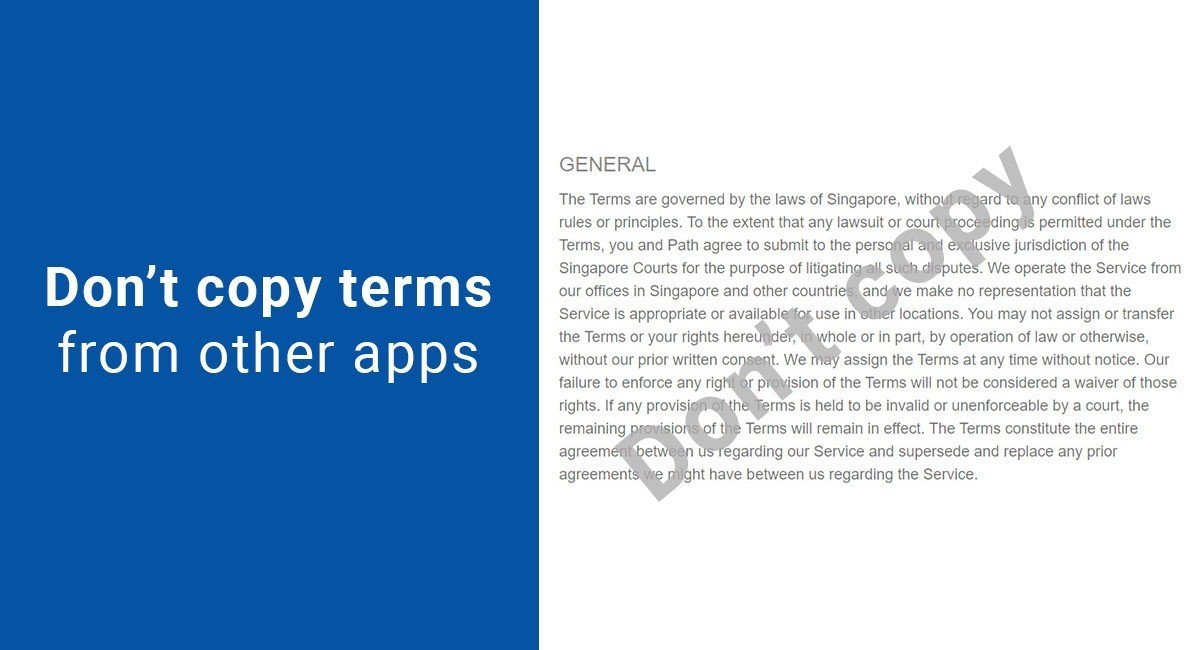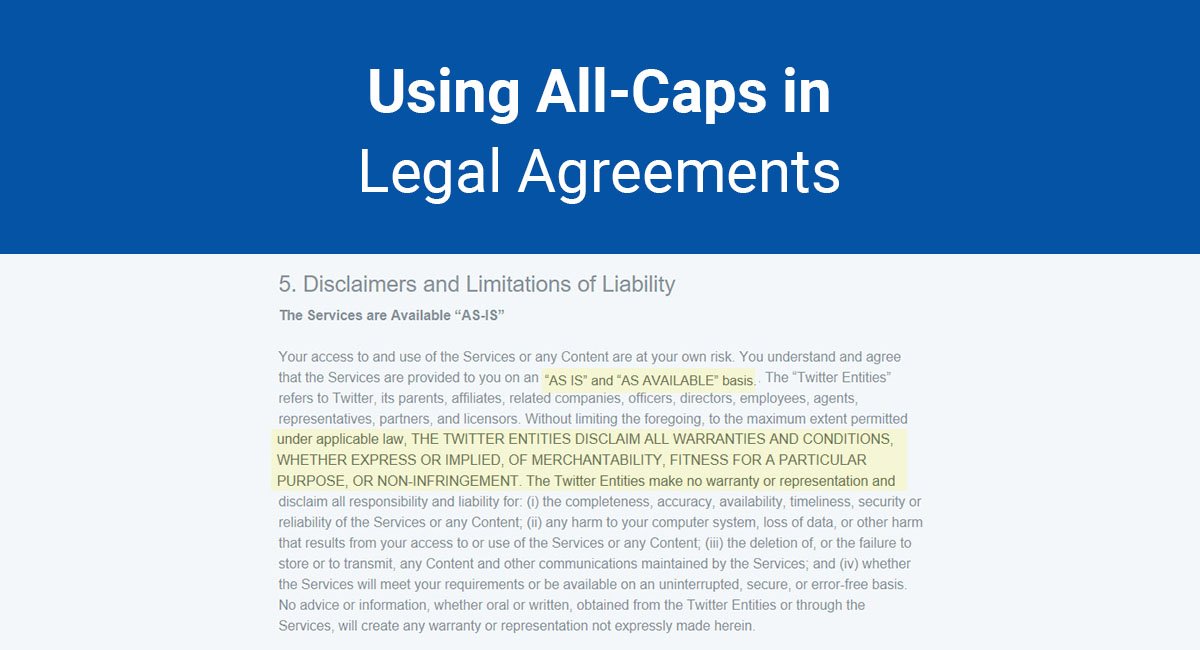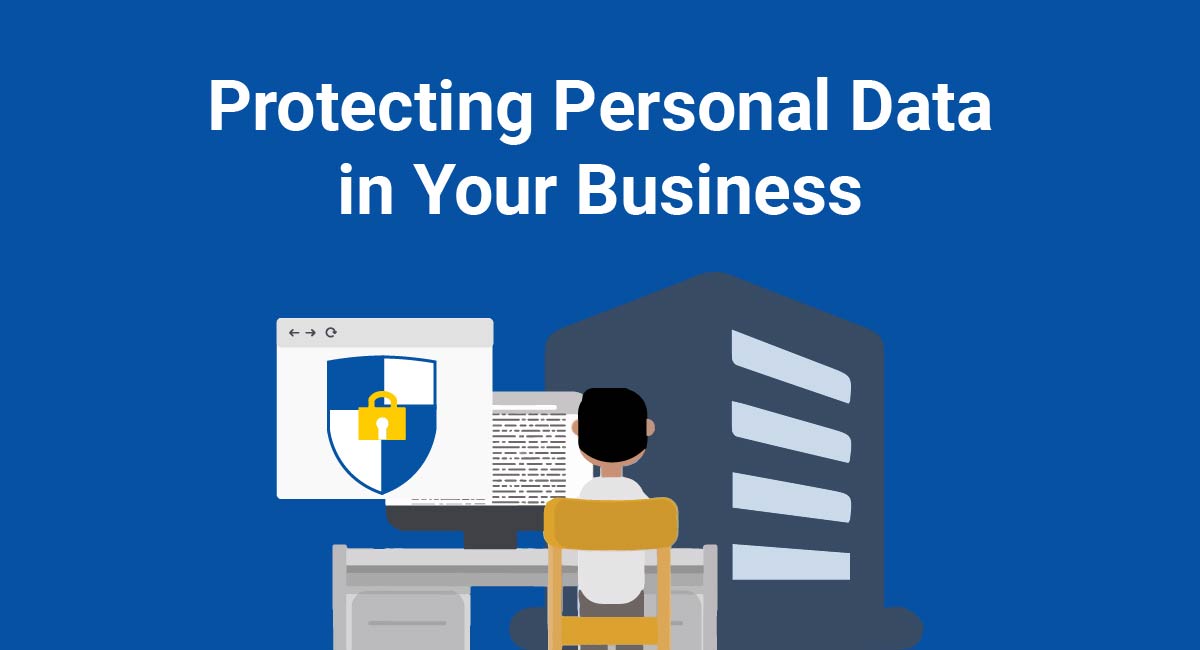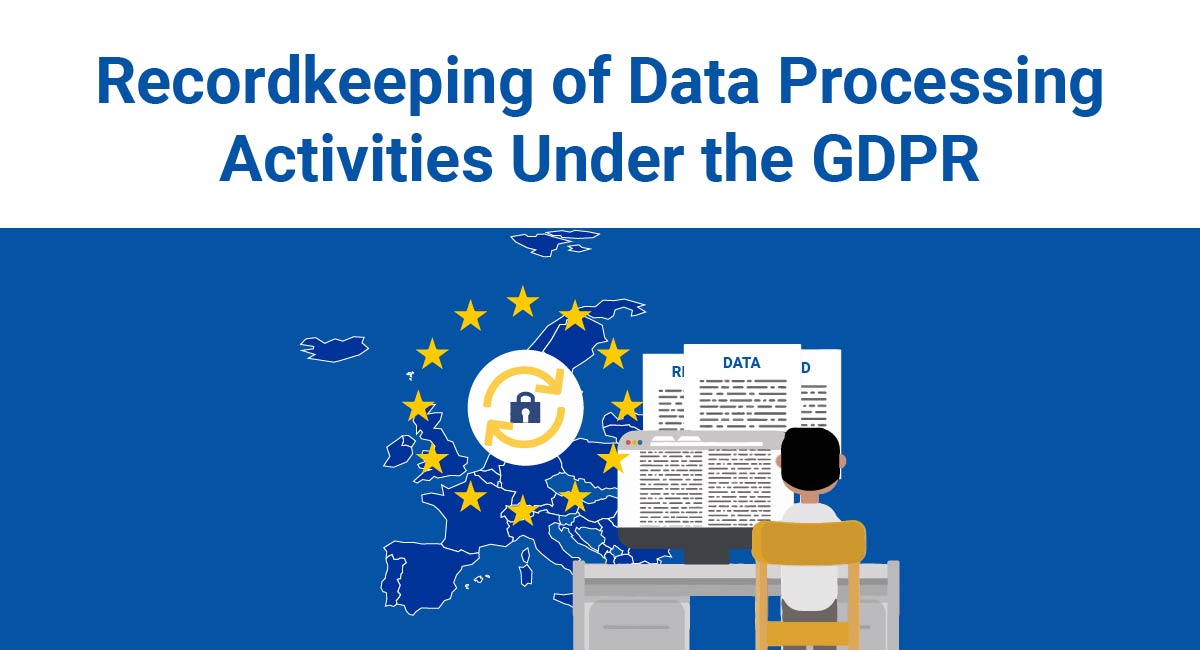Every mobile app benefits from having a Terms and Conditions (T&C) agreement.
As this type of legal agreement is often long and complex, many first developers might consider looking into copying a Terms and Conditions agreement from another mobile app to use as their own.
However, that decision requires careful consideration as even apps that are similar to yours may contain clauses that you do not need or ones that leave out those legal clauses that your app does require.
Why You Need a Terms and Conditions
The Terms and Conditions agreement defines duties and expectations between you -- the developer of the app-- and the users using the app.
This agreement may define rights and responsibilities, payment terms (if relevant), restricted content, and limits to liability.
Depending on the nature of your app, you may also add age restrictions and social media rules.
You also need the Terms and Conditions agreement so you have the right to terminate the agreement with users who abuse your mobile app.
If you discover a user is harassing others or committing other acts that are in violation of the agreement, that allows you to cut them off and reduce your chances of facing liability.
That is, the Terms and Conditions will put you and your users on the same page.
Users download your app knowing what to expect and you --the company behind the app-- will have the means to enforce the rules.
Since this is a big part of controlling liability against your company, you need to take the steps to create a Terms and Conditions agreement that is relevant to your app and not just a quick copy-and-paste job.
Differences Matter
An obvious difference between apps is the amount of social interaction they can host between users. Some apps don't have interaction between users, but others do.
For those apps that do, since online harassment is a serious issue, many developers place rules regarding behavior expectations in the app's Terms and Conditions.
Instagram makes its "no-tolerance policy" clear in its basic provisions within the Terms of Use page:

Tinder places similar limits. However, as its platform encourages intimate communication, there is more detail in its policy regarding behavior.
The section also includes an explanation that any objectionable content is the responsibility of the user, not Tinder.

Pandora and Spotify distribute music through their apps. In their Terms and Conditions, it's made clear that users do not purchase the music but obtain a license to access it.
This is Spotify's Terms and Conditions page, at the "Rights We Grant You" clause:

This is Pandora's Terms of Use page, at the "Your License to Use the Service" clause:

User-generated content may be another item you need to address. Spotify allows users to create playlists, so it places terms that address intellectual property rights and the possibility of account removal if there's a violation of its Terms and Conditions of Use agreement.
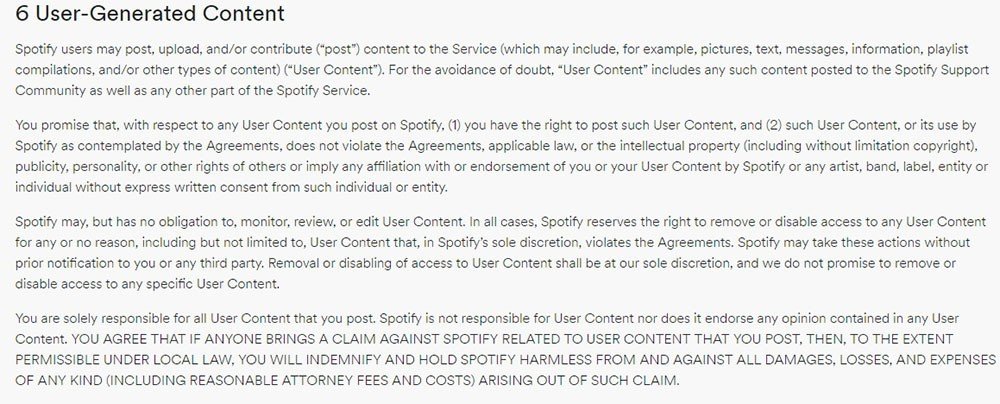
The photo-sharing app, 500px, has terms in the Terms of Service page that assure that no one infringes on intellectual property rights or posts inappropriate material:
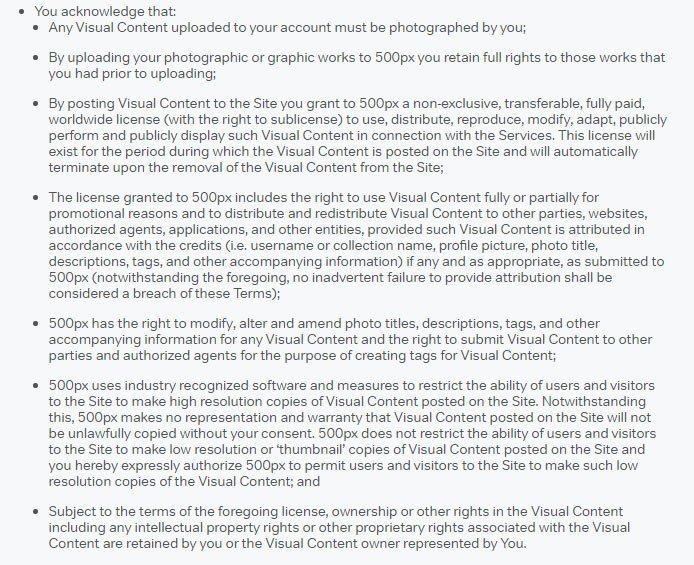
Finally, Terms and Conditions that are specific to various industries such as banking or healthcare will address special features within the app.
EasyJet doesn't need provisions about user conduct, intellectual property or licensing material to users. Where EasyJet could face liability is with user reliability on its products.
For example, the Terms and Conditions of EasyJet will describe its "passport scanner" functionality as a convenience but not a replacement for a user's physical passport:

You Need Custom Clauses in Terms & Conditions
An area where app developers tend to overlook the details is where the Terms and Conditions contains complex legal language.
If you're located in Australia but your cut-and-paste job places your choice of law in the United States, you'll face more than a credibility crisis. It's likely you would be held to the laws of a jurisdiction thousands of miles from you.
That is why you need to pay close attention to the following sections. Your legal requirements and obligations can change if you don't make the needed changes.
Governing Law
Your Terms and Conditions' clause on "governing law" describes the laws you wish to be bound to in the event of a dispute or other legal challenge.
Most developers choose their own location for governing law, such as with 500px and New York state. However, the agreement will also contain a provision covering international law since the use of 500px use is not limited to the U.S.

Tripsource, another travel app, has offices located in Georgia, USA, but also enjoys international use. It makes the same decision as 500px: it chooses its location of business but also excludes international law in its Terms and Conditions page.

Pandora has a similar governing law provision, except it chooses its location of incorporation rather than the location of its primary business office. It does not have a reference to international law.

Path has corporate offices in San Francisco, CA, USA, but operates from Singapore. It makes this very clear in its governing clause of its Terms of Use page as well as its choice to be governed by the laws of Singapore:
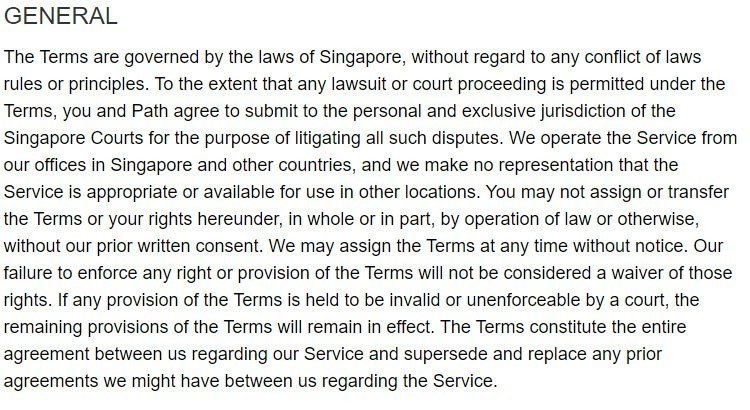
Your choice for governing law can be determined by many considerations. Companies may choose the state where their attorney offices are located. They may choose where they register their corporations or even where a majority of their services are performed. No matter where you choose as your location for governing law, make it clear in your Terms and Conditions.
Also, double-check that the clause is correct in your agreement.
Limitation of Liability
Anytime you want to put a limit on your liability or warranties, you need to proceed carefully.
Courts give these clauses intense scrutiny and if you put in limits that are not appropriate for your jurisdiction, they'll not be enforceable.
Generally, a limitation of liability prevents you --the developer-- from being liable for damages a user incurs from using your app.
For example, if a user posts a status that later gets him fired from a job, Facebook will not be liable for these damages. However, that does not necessarily protect your company from liability arising from the failure of the app, or any damages resulting from a security breach.
If there's a situation where liability cannot be limited, the control occurs through a cap on damages.
500px limits its liability to "failure of its essential purpose" and $100.00 damages in its Terms of Service agreement:
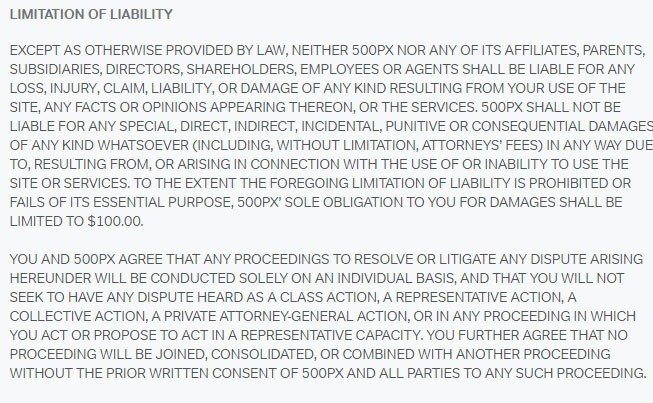
Path, which we learned earlier is controlled by Singapore law, takes a similar approach. Like the U.S. and the U.K., it is also controlled by common law which is why you would see a fairly similar limitation of liability in its Terms of Use agreement:
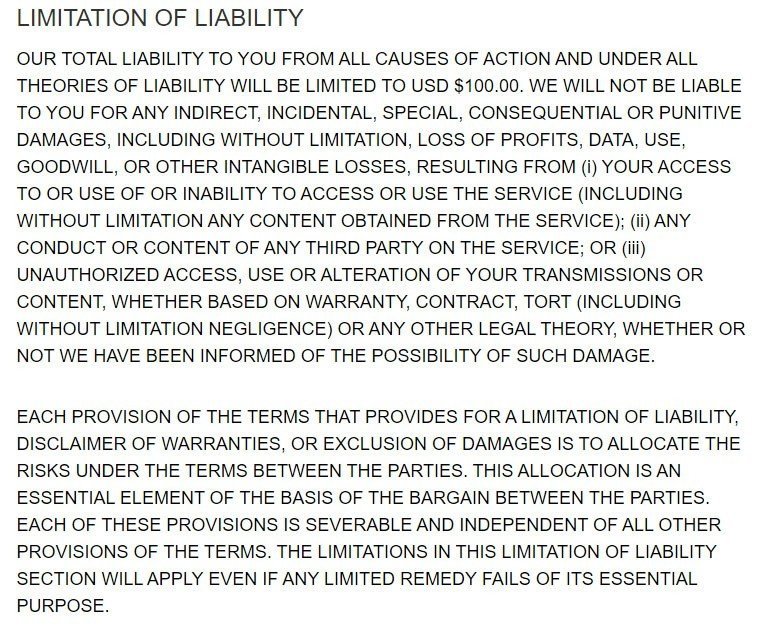
However, your mobile app can be part of a SaaS app. In these cases, you can limit based on what a user pays for your service in the Terms and Conditions agreement of your app.
Tripsource takes this approach with its limitation of liability clause in its Terms and Conditions agreement:

Age Limits
Generally, most apps limit the age of their users to 13 years and above.
Even then, children must obtain apps through a parent or guardian account since the child cannot be held responsible in contractual relationships. However, there are other considerations that also go with age.
The U.S. and Canada have laws against making sexually explicit material available to children.
Children's privacy is also treated differently in the U.S. with the Children's Online Privacy Protection Rule (COPPA). A website or mobile app that deals with material for children under 13 must follow different privacy procedures than those designed for older audiences.
For that reason, developers will cap user age at 13. Instagram makes that very clear in its basic terms within its Terms of Use agreement, at the "Basic Terms" section:

500px goes beyond just sharing photos in an Instagram-type platform. It includes a marketplace, which allows photographers to sell their material.
Since users must reach the age of majority to contract, 500px contains two age limits:
- One age limit for its marketplace
- Another age limit for the other for general use of 500px app

There are also circumstances where apps need to remain only for individuals over the age of 18.
As a dating app, Tinder could host the exchange of explicit material. Allowing children under 18 to communicate with adults on Tinder's platform is not appropriate.
To cover itself on civil and criminal liability, Tinder does not allow anyone under 18 to participate as stated in its Terms of Use agreement, at the "Eligibility" clause:

Termination
Termination of a user's right to your mobile app can be a touchy area.
This why you want to customize this section of your Terms and Conditions agreement according to your app's functionality.
When you include the "Termination" clause in your Terms and Conditions there are at least two areas you need to cover:
- First, the circumstances where you can terminate a user's access. These can include violation of your Terms and Conditions agreement, copyright infringement, harassment or other non-compliance.
- The second area addresses what users lose when they voluntarily terminate their relationship with your app.
If you charge a subscription fee for your app, you may also want to include a clause that tells users how to terminate their accounts.
Spotify covers this issue in its Terms and Conditions of Use agreement along with the circumstances where it would terminate a user and the user's lack of access upon termination:

Pandora has a similar but shorter termination clause in its Terms of Use agreement:

As a social media platform that does not take responsibility for the content posted, Instagram adopted a much broader termination provision.
It basically states that a violation of its Terms of Use agreement can result in termination of the account:

Your termination clause should always make a violation of the Terms and Conditions grounds for termination of an account.
That will allow you to act when there's a violation of the legal agreement or other users facing harassment from another user.
Always Customize Your Terms
Copying and pasting a Terms and Conditions from another mobile app is not recommended, even if the app you're copying the terms from is similar to yours.
Chances are there will be some important differences that you'll need to address. For example, Instagram and 500px both provide photo sharing but also have enough differences that they cannot operate on identical terms in their Terms and Conditions agreements.

Comprehensive compliance starts with a Privacy Policy.
Comply with the law with our agreements, policies, and consent banners. Everything is included.
